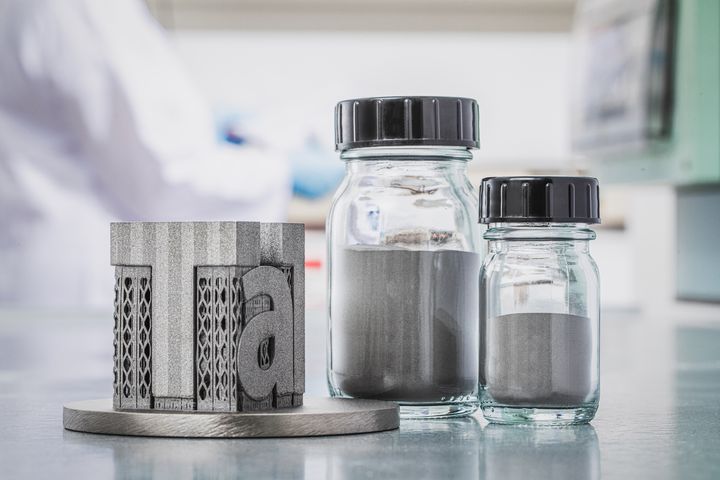
I had a thought about why there are a number of new entrants to the AM metal powder market.
That market specifically addresses the increasing need for metal powder used in aerospace and automotive applications, where additive manufacturing (AM) techniques have now been firmly established.
Pioneered by a few companies like GE, which developed methods of producing aircraft engine parts using AM techniques, the practice has now spread to other aerospace manufacturers. In a way, it may become a de facto standard process in the industry, thus requiring most participants to make use of additive manufacturing.
That aerospace success has been so great that other non-aerospace industries are now looking hard at the technology for their own use.
The result of all this activity is that there is a growing need for metal powder.
Alloyed and TANIOBIS
While there have been a number of long-term specialized AM metal powder providers, there are more emerging these days. Last week it was announced that ALTANA has entered the market.
This week there’s another move in that market: a partnership between UK-based Alloyed and Germany-based TANIOBIS. They hope to add new products to the market, with TANIOBIS Corporate Business Development & Communications head Katarzyna Kosowski saying:
“There is great synergy between TANIOBIS and Alloyed that I believe will serve our clients in limitless ways when it comes to providing end-to-end solutions for new and greatly improved applications with metal AM technologies. By collaborating with the experts at Alloyed and their exceptional ABD platform, we are extending our reach and capabilities into new and innovative areas for advanced manufacturing and particularly for additive manufacturing. The opportunities that AM affords has been well documented, but unlocking new materials for AM remains a constant goal. Together with Alloyed, we at TANIOBIS hold one of the keys.”
What exactly are TANIOBIS and Alloyed up to? They explain:
“Together Alloyed and TANIOBIS are collaborating on the development and analysis of new titanium and refractory alloys that will further open up the material palette for additive manufacturing. The alliance of the two companies enables a full end-to-end solution for the material development process, including material analysis and qualification, material production, component design and performance, and also into pilot production. Alloyed and TANIOBIS are working on a broad spectrum of projects, some with third parties, for a range of applications across the medical, aerospace, and e-mobility industries.”
New Metal Powder Providers
Some of these new metal powder entrants are actually not really “new”. They are long-term providers of powders — just for other industries. They’re now seeing the possibility of a new market in the AM world, and are redirecting some of their resources towards that goal.
There are a great many companies in this position, as metal powders are a relatively common product worldwide. They are used in paints, coatings and other commodity products. It seems natural for these operations to see if they can penetrate a new market with modified versions of their products.
But will this work?
I’ve seen this scenario before. It happened in the 3D printing filament market a few years ago. At that time the numbers of filament-based 3D printers were rising and many regional plastics manufacturers, particularly those who operated extrusion lines, felt they could easily produce filament products for the new applications.
I spoke with companies that had previously produced items like fishing line or other extruded plastic products. These companies initiated ventures into 3D printer filament, but most of them failed, faded away or never took off.
The reason for this, I think, was that while they understood their original market, they did not sufficiently understand the nuances of the 3D printer market. Factors that were important to that market were unheard of in original markets. Thus they often succumbed to those companies that truly understood the problem. One excellent example of this is how Prusa Research fired up a massively successful line of filament products, Prusament, essentially from scratch. I believe they succeeded because they inherently knew what was really required and focused on those aspects.
Meanwhile, we now have metal powder companies jumping into the AM space, and I’m wondering if some of them will suffer the same fate as some of the plastics manufacturers.
One way to increase the odds of success would be to tie themselves to a metal 3D printer manufacturer — or two. That way they can perhaps gain some very valuable insight into how best to develop metal powder products that will be widely accepted.
In any case, the arrival of additional providers will certainly add to the level of competition and hopefully will cause the pricing for metal powders to drop. That would be a good thing for all metal AM operators.
